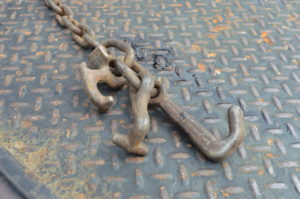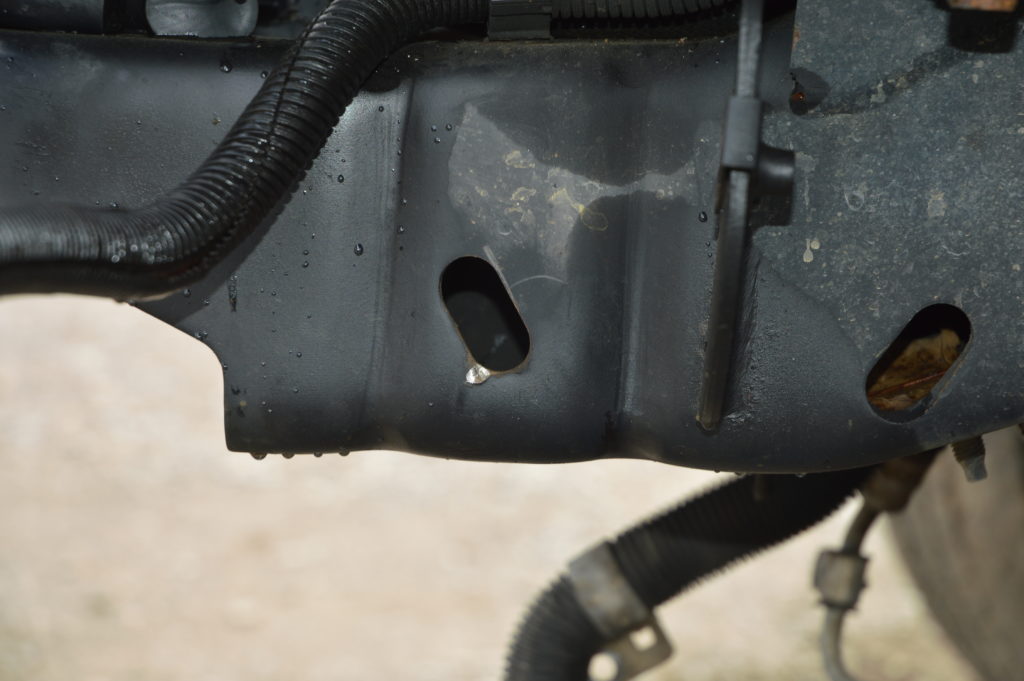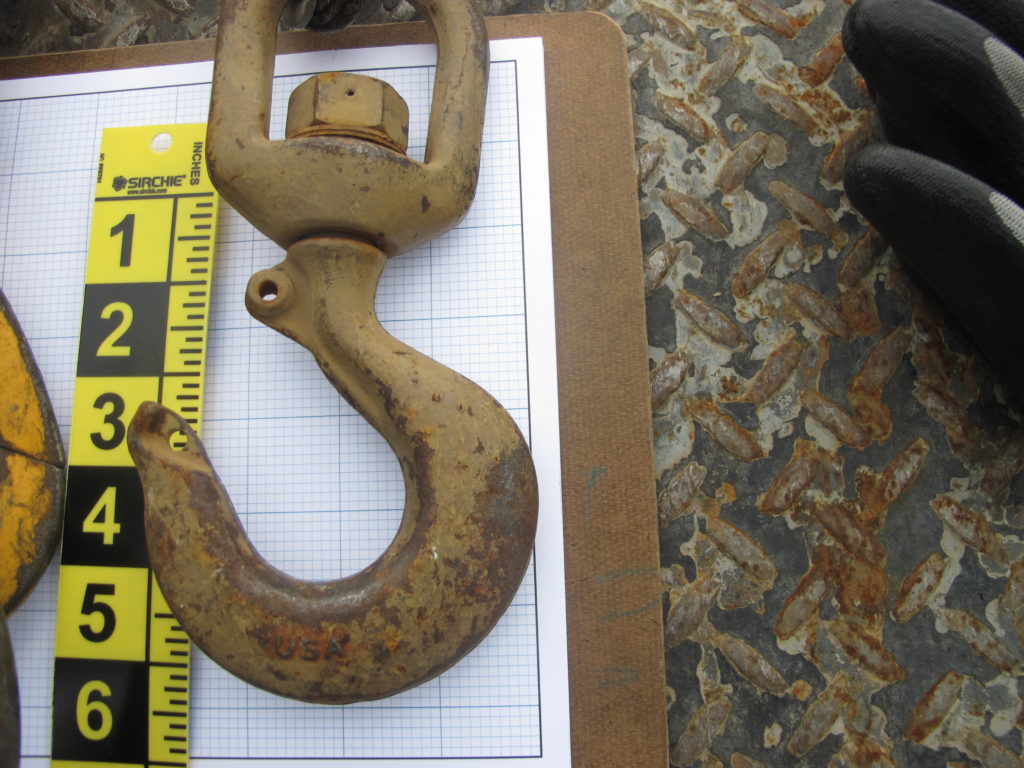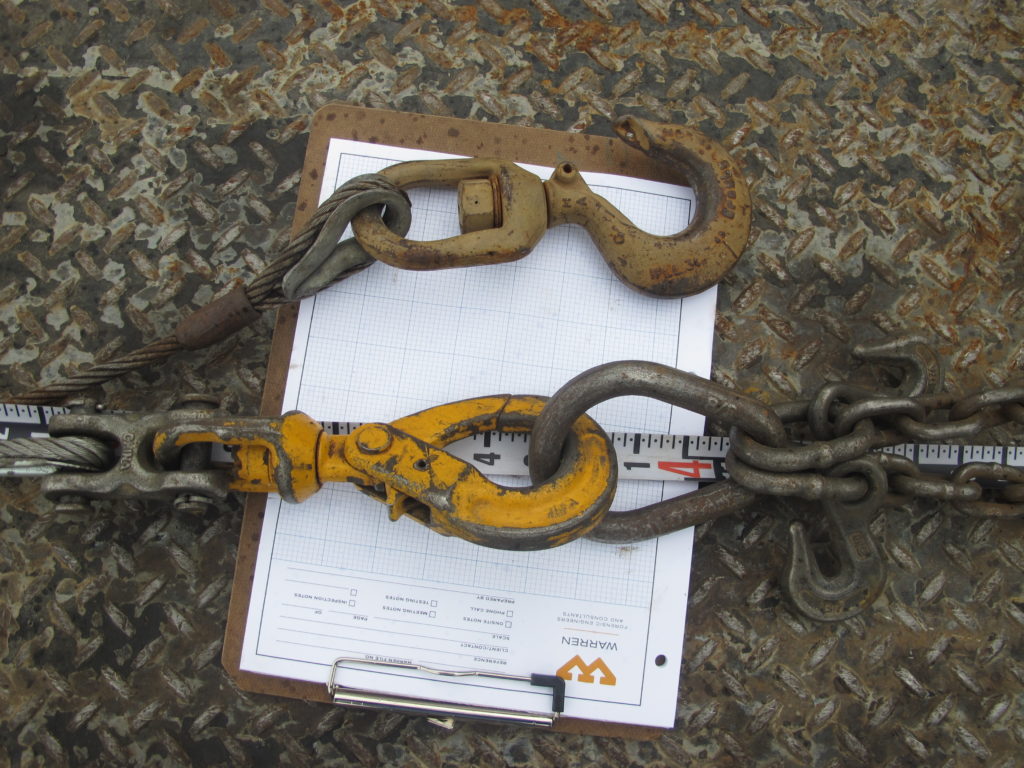An unfortunate and tragic case that we investigated involved a commercial “rollback” recovery truck that was being used to transport a four-wheel drive diesel pickup. The diesel pickup was not in running order with its’ engine in the bed of the truck. Consequently, a commercial towing company was hired by the truck owner to transport the truck. In the process of loading the truck onto the rollback, the truck came uncoupled from the winch and cable system. The truck then rolled down the inclined bed of the rollback, running over and killing a bystander.
Photographs obtained from the law enforcement investigation revealed that a transport grade “RTJ” chain was being used along with the winch system on the rollback to pull the truck up onto the inclined bed of the recovery vehicle. RTJ hooks are made to fit in specific slots on the frames of cars and trucks for towing and recovery purposes.
An inspection of the subject rollback transport truck was conducted several weeks after the incident. The rollback had continued to be used in daily transport and recovery activities. The winch cable and hook involved in the incident had been removed and stored. A new cable and hook had been installed on the rollback vehicle.
Examination of the cable and hook involved in the incident revealed that the hook did not have a latch installed. The owner of the rollback indicated that the hook did not have a latch on it on the day of the incident and he stated the latches often get broken almost as soon as they are replaced. The description of the incident by the rollback operator indicated that the disabled truck “lunged” as it was being loaded on the inclined ramp of the rollback truck. Because the vehicle lunged, slack was created in the winch cable and the RTJ chain came out of the rollback winch hook. Once the disabled truck was free from the cable, it rolled back down the inclined bed of the transport truck and struck a bystander who had moved into the path of the vehicle.
The cable and hook assembly on a towing and recovery vehicle meets the definition of severe duty in my opinion. Most vehicles don’t break down or wreck in clear, level, well lit, easily accessible locations, although some may. The very nature of the equipment’s use exposes it to harsh conditions. As such, maintenance of these items is crucial to safety.
The latch on a hook is designed to keep the chain or sling in the hook should the line go slack. Without a latch the chain can jump off or come loose from the chain due to the loss of tension. The lunging motion of the disabled truck created a slack condition that allowed the RTJ sling to jump out of the hook due to the missing latch.
Industry literature stresses that hooks should be frequently inspected, and the latch should be in good repair and functional. If the latch is not in good repair it should be replaced. Industry literature also stresses the importance of using a hook with a latch in situations utilizing a winch.
Obviously, the hook involved in this incident did not have a functioning latch, as admitted by the owner. In fact, during the inspection it was noted that the owner had replaced the hook with a self-locking clevis-style hook. This is a much more robust hook with a tough locking mechanism that should stand up well to the abuses of the towing business.
Another item that must be addressed is the necessity of keeping bystanders out of harms way. If you read the literature published by both the towing and winch industries, the need to keep bystanders clear is highlighted over and over. In fact, the rollback operator stated he told the bystanders to keep clear of the vehicle. However, it is not always possible to keep an eye on everyone on all sides of the vehicle while operating the controls of the winch. Humans are by nature curious and will often unintentionally place themselves in harms way for a closer look at what’s going on. This only reinforces the absolute necessity of frequent inspections of all towing and recovery equipment to protect both the operator and bystanders during a loading operation.
This unfortunate event underscores the absolute necessity of frequent inspections of all towing and recovery equipment as well as a hawk-like vigilance during the loading process. Failing to properly address both issues can have tragic results. If you have a matter involving towing and recovery equipment, contact an expert at WARREN.
Chad Jones, PE, CFEI has a Bachelor of Science in Mechanical Engineering from Clemson University. Chad has over 20 years of engineering experience including mechanical, process, and manufacturing engineering. He participated in and led industrial incident investigations and participated in in-depth process safety audits. This work has included equipment design, machine safeguarding, cost estimating and safety compliance. Chad also has over 10 years of commercial, industrial, and residential HVAC and plumbing design experience. Chad is a Certified Fire and Explosion Investigator and IFSAC certified Firefighter II in Greenwood County, South Carolina.







